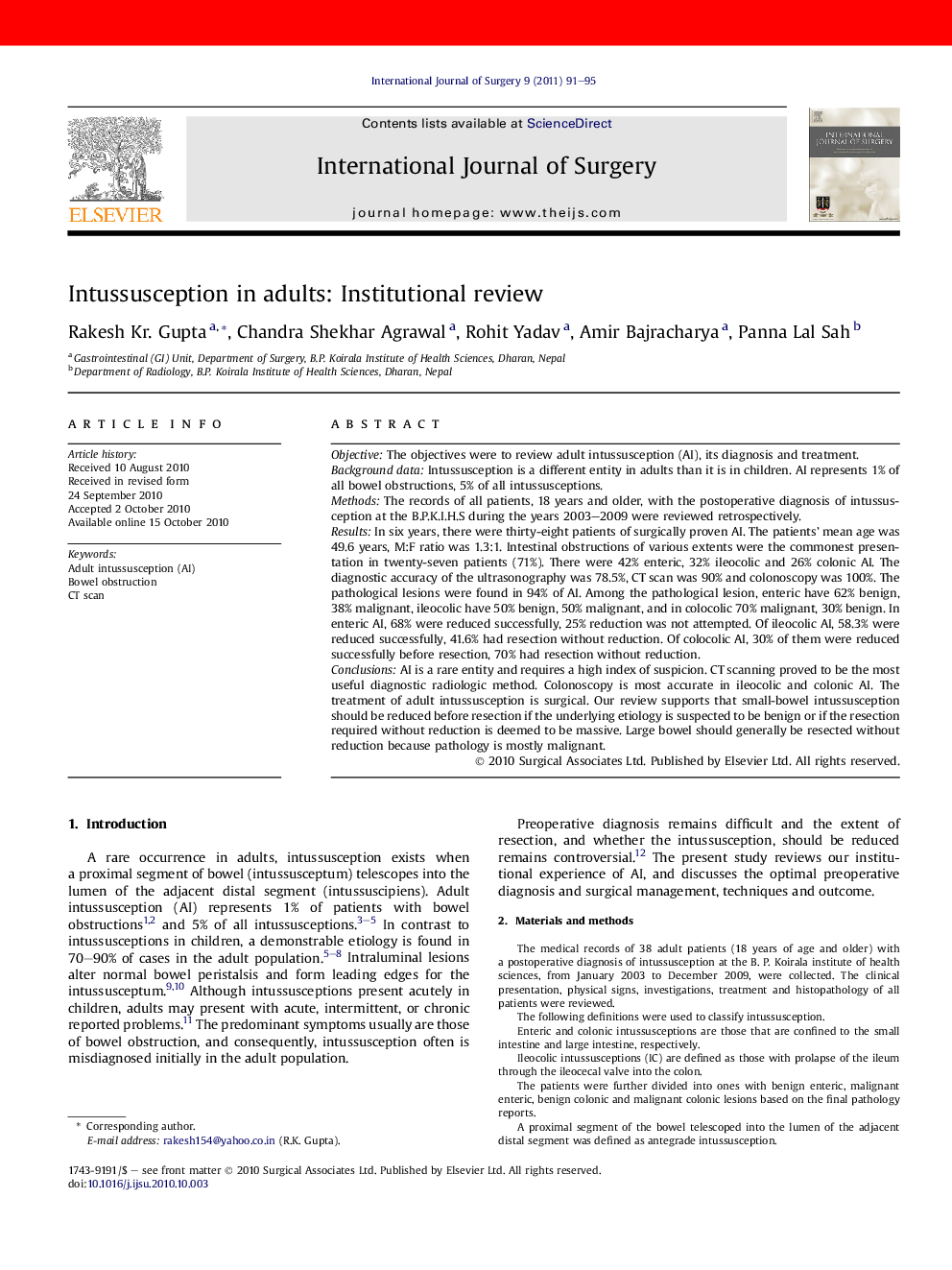| کد مقاله | کد نشریه | سال انتشار | مقاله انگلیسی | نسخه تمام متن |
|---|---|---|---|---|
| 4287043 | 1612027 | 2011 | 5 صفحه PDF | دانلود رایگان |

ObjectiveThe objectives were to review adult intussusception (AI), its diagnosis and treatment.Background dataIntussusception is a different entity in adults than it is in children. AI represents 1% of all bowel obstructions, 5% of all intussusceptions.MethodsThe records of all patients, 18 years and older, with the postoperative diagnosis of intussusception at the B.P.K.I.H.S during the years 2003–2009 were reviewed retrospectively.ResultsIn six years, there were thirty-eight patients of surgically proven AI. The patients’ mean age was 49.6 years, M:F ratio was 1.3:1. Intestinal obstructions of various extents were the commonest presentation in twenty-seven patients (71%). There were 42% enteric, 32% ileocolic and 26% colonic AI. The diagnostic accuracy of the ultrasonography was 78.5%, CT scan was 90% and colonoscopy was 100%. The pathological lesions were found in 94% of AI. Among the pathological lesion, enteric have 62% benign, 38% malignant, ileocolic have 50% benign, 50% malignant, and in colocolic 70% malignant, 30% benign. In enteric AI, 68% were reduced successfully, 25% reduction was not attempted. Of ileocolic AI, 58.3% were reduced successfully, 41.6% had resection without reduction. Of colocolic AI, 30% of them were reduced successfully before resection, 70% had resection without reduction.ConclusionsAI is a rare entity and requires a high index of suspicion. CT scanning proved to be the most useful diagnostic radiologic method. Colonoscopy is most accurate in ileocolic and colonic AI. The treatment of adult intussusception is surgical. Our review supports that small-bowel intussusception should be reduced before resection if the underlying etiology is suspected to be benign or if the resection required without reduction is deemed to be massive. Large bowel should generally be resected without reduction because pathology is mostly malignant.
Journal: International Journal of Surgery - Volume 9, Issue 1, 2011, Pages 91–95